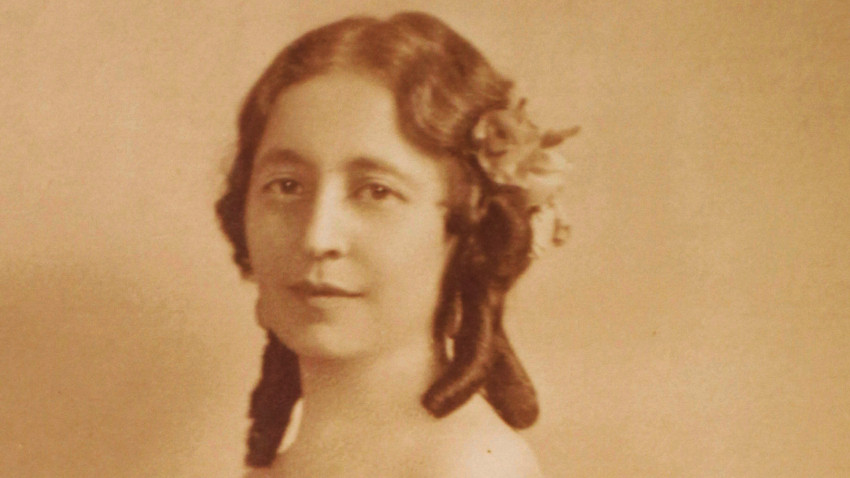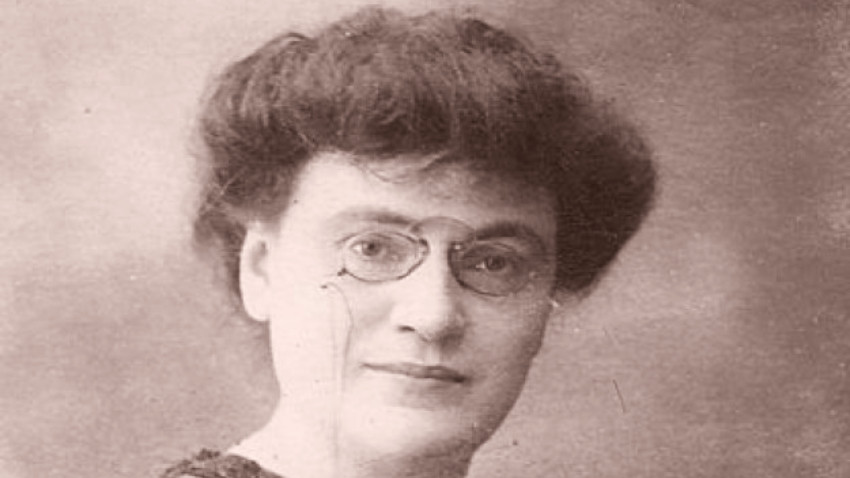In moments of crisis, when a nation is oppressed and desperate, it usually looks back to the past, to history, to find an explanation for why it has been subjected to such an ordeal.
Then this nation needs the bright memory of all those national heroines who gave their lives in the struggle for national emancipation, who fought for equality in a man's world. Those brave and intelligent women who proved their worth, but without losing the feminine compassion and willingness to sacrifice in the service of their motherland.
Katya Zografova has written an anthology of these remarkable women. In her new book, Remarkable Women from/for Bulgaria, she describes the lives of more than 50 Bulgarian and Bulgarian-loving foreign women whose stories span seven centuries - from King Shishman's sister, Kera Tamara, to the teenage poet Petya Dubarova.

"There are some universal traits that unite my heroines and these are the virtues of women: strength, beauty, stoicism and femininity," says Katya Zografova.
During her research, the literary historian came across a number of impressive documents. One of them was a letter from Anastas, the younger brother of Bulgarian revolutionary Rayna Knyaginya, to his sister.
It tells about Lady Strangford - a great benefactor of the Bulgarians – who built six hospitals in the country after the suppression of the April Uprising (1876). She also adopted six girls, whom she took to England to be educated and become Bulgarian teachers.
"When she arrived in Panagyurishte - the epicenter of the April Uprising - she visited the home of presbyter Nona Futekova and asked about her daughter Rayna - says the author of the book. - On this occasion her brother Anastas wrote: "Sister, an English lady visited us, she asked about you, we had a very nice talk and she gave our mother 1 pound". With this visit to the mother of Rayna Knyaginya (Rayna the Princess), Lady Emily Ann Strangford showed her appreciation for what this young teacher,who sewed the main insurgent flag of the Panagyurishte Revolutionary District of the April Uprising and waved it along with emblematic revolutionary leader Georgi Benkovski, has done.
Thus, placing the great women of Bulgaria in a broader context, in search of connections between them and the other significant female world figures, the book gives a completely new insight into the entire history of women in Bulgaria and their significance."
Katya Zografova also writes about the resourcefulness of women - their wits and cunning, in contrast to the perception in the Ottoman Empire that the "weaker" sex was far behind men in merit and therefore incapable of fearless deeds.

"I did a somewhat heretical collective portrait called The Secret Weapons of Women in the National Liberation Struggles, and I decided to write about Todora Mirazchieva Bakardzhieva, called The Long Hair. She seemed to me an emanation of femininity, beauty and resourcefulness. She had a specific participation in the heroic struggles of her time", continues Katya Zografova. - This dazzlingly beautiful and well-built Bulgarian woman was a covert courier of the Bulgarian Secret Revolutionary Committee and carried the most classified and dangerous mail of her time across the Danube from Giurgiu (Romania) to Ruse. Todora Mirazchieva braided the letters in her hair and hid the weapons in the wide, ornate skirts of her dress."
In the early years following the Independence of Bulgaria from Ottoman rule, a young and emancipated Bulgarian woman arranged an exhibition of her expressionist works in Vienna and fascinated the Greek writer Nikos Kazantzakis so much that he proposed marriage to her.

"An avant-garde artist, Bistra Vinarova is unique for her time in Bulgaria - points out the writer. - Not only Nikos Kazantzakis admired her, but also Rainer Maria Rilke. She was very beautiful, which is why her face is in the centre of the book cover. Bistra Vinarova was the wife of the very famous, worthy and beloved diplomat and author of the famous book The Builders of Modern Bulgaria Simeon Radev. But, you see, we know almost nothing about his wife, although she deserves our attention."
According to Katya Zografova, remarkable women are not just in the past, they are among us today. In the field of art, culture, and sadly, also among those brave mothers, fleeing with their children from the war, while their husbands fight for their homeland.

"In my book I have included one very strong, interesting, controversial Ukrainian woman," says Katya Zografova, "Anna Karima was one of the first suffragettes at that time. She was born in Berdyansk to a Bulgarian father and a Ukrainian mother. This explains the fact that she was notably strong, even in some ways aggressive in her feminist battles. So, yes, even today there are remarkable women, like the ones who came fleeing from the that terrible fratricidal war. Among the Bessarabian Bulgarians I can look for future heroines for the book's sequel."
There is not a single monument to a Bulgarian woman in Sofia, Katya Zografova points out and asks rhetorically why none of these enlightened ladies is honoured.
English: Elizabeth RadkovaPhotos: libraryvt.com, ozone.bg, library
On November 24, the Bulgarian Orthodox Church honors St. Catherine (Sveta Ekaterina in Bulgarian) , who was one of the most educated women of her time. She lived in the late 3rd and early 4th centuries and came from a noble family in Alexandria...
The Patriarchal Cathedral of St Alexander Nevsky is celebrating its temple feast today. The cathedral, a symbol of the Bulgarian capital, was built "in gratitude to the Russian people for the liberation of Bulgaria from Ottoman rule in 1878". Who..
On November 22 and 23, the Bulgarian Orthodox Church will solemnly celebrate the 100th anniversary of the consecration of the Patriarchal Cathedral "St. Alexander Nevsky" . For a century the cathedral has been "a witness to all the hopes and..
The head of the statue of Tyche, the goddess of Philippopolis, has been discovered in the Episcopal Basilica in Plovdiv, said the head of the..

+359 2 9336 661
